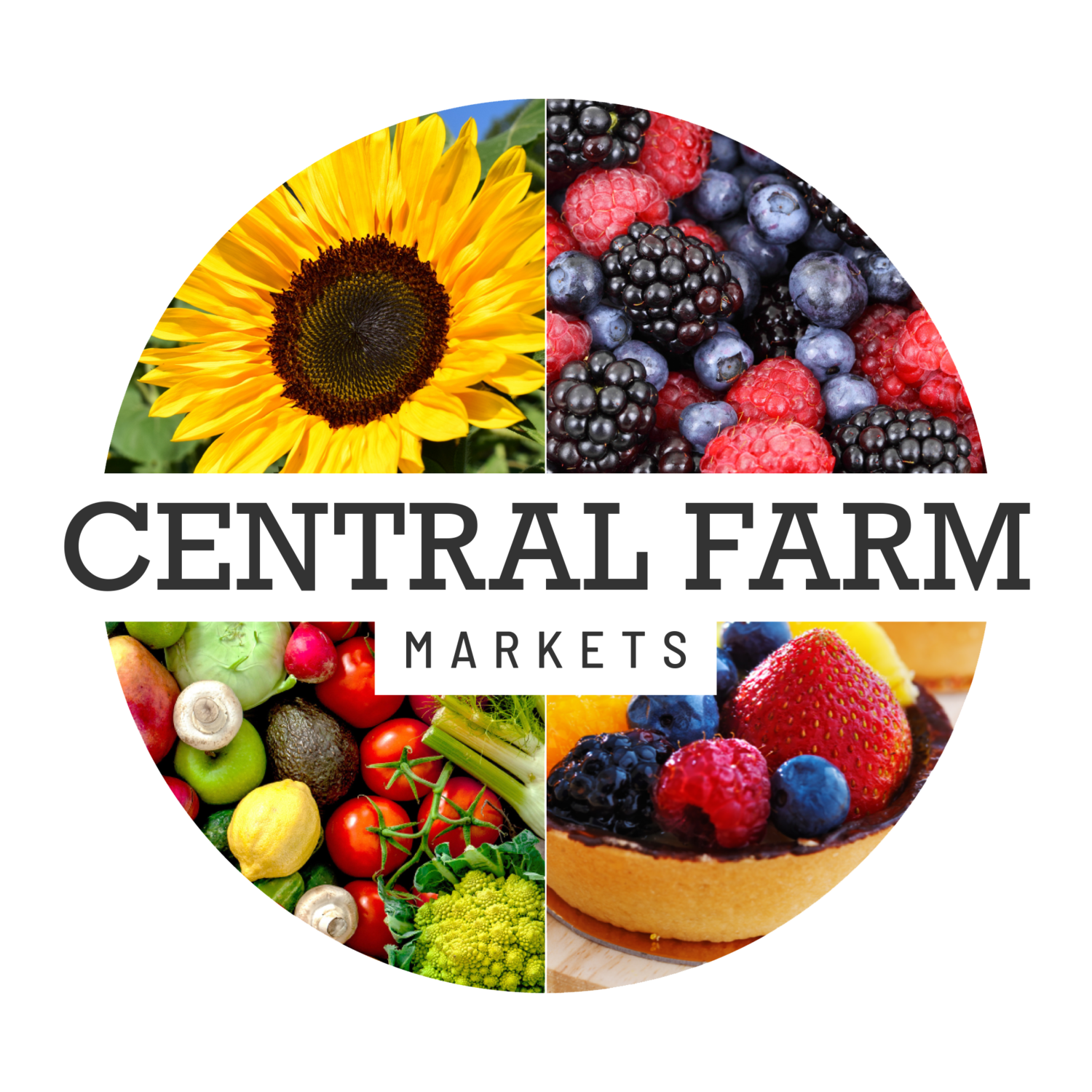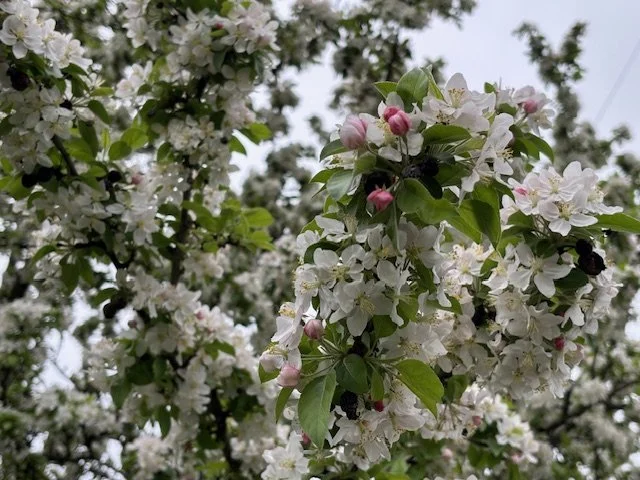Got Crabs?
I bet you thought I meant Blue Crabs, right? After all, soft shells are finally back in season with our fishmongers. Here in Maryland when somebody says crabs instantly minds go to the crustacean kind seasoned with Old Bay. But here on the other side of the Mason Dixon line, especially in the fruit belt and on older farms, crabs take on different meaning.
This is the time of year when you can't miss them. Sometimes you will find them in a prominent spot like the three here situated on the hillside between the barn and the driveway. At other times they are innocuously placed in hedgerows and at the edge of fields between wide open spaces and woodlots. Wherever they are right now they are in bloom and performing a critical service.
I'm talking about Malus rosaceae, aka: crabapples. Blame their name on the Scots whose word for sour and brush wood is scrab. These are the wild cousins of domestic apples, however, you will rarely if ever find them in their raw form at a market, let alone a grocery store. They’re not something one typically eats raw, but they have been coming back in vogue with specialty wine and regional hard cider makers. Chefs with a flair for local ingredients seek them out for sauces, jellies, and chutneys.
The old timers who planted crabapple trees knew their worth was not in the fruit that they produced for human consumption, but in all of the benefits they brought for the surrounding wildlife. I thought it fitting that the three crab trees here went into full bloom on Earth Day. What better way to celebrate the environment than an explosion of papery white petals bursting from bright pink buds. The aroma as I walked down to the barn for morning chores was practically intoxicating. I wanted to stand there bathed in the scent of spring, but as always, there was work to be done.
By the afternoon the open blossoms had attracted honey bees and the trees with the frenzied hum of worker bees diligently collecting the nectar. With the arrival of warmer weather, honey bees aren't the only ones hitting the trees there are an assortment of wild bees, wasps, and even flies doing their thing. With the explosion of pollinators, birds, such as Cedar Waxwings and Robins are also attracted to the activity. These are the same birds who are building their nests in the branches of the canopy where they will raise their young in the dense green leaves that have also unfurled along with the flowers.
Once pollinated the tree will get to work turning flowers into fruit. Crabapples are much smaller than the regular eating apples, typically 2 inches or less in diameter. They also grow in clusters similar to cherries. I've never done anything with crabapples other than clean them out of the gutters and downspouts but there's plenty of wildlife who takes advantage of the abundance that will ripen in late summer and hold fast to the branches throughout the winter. The trees along the hedge row help to support the local deer and turkey populations. The trees by the barn get trimmed by the goats and sheep as they mow the grass in the surrounding area. Fair warning though, you don't want to let dogs eat the crab apples as they contain cyanogenic glycosides which release cyanide after they have been digested. Definitely an expensive trip to the vet.
There are nearly 60 different species within the genus that are native to the northern hemisphere. Some of the domestic varieties such as Granny Smith were crossed with European crab apples and North American varieties. Crab apple trees have fallen out of favor as ornamental landscaping due to their reputation for being dirty and needing regular maintenance to control suckers that sprout around the base giving it more of a bush look then a tree. Some of the varieties such as the Asian and Siberian crab apples are considered invasive.
As much as I wanted to spend Earth Day under the blooming crabapple trees, their scented petals raining down like snow flakes as I re-read Rachel Carson’s Silent Spring, there’s too much work to be done, both on the farm and on the planet.

